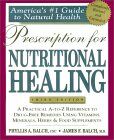Immune Power For Children
By Leo Galland M.D., F.A.C.N.
Director,
Foundation for Integrated Medicine
(Author of
Power Healing: Use The New Integrated Medicine to Heal Yourself)
"Our modern world is hard on kids. Smog and air pollution are an unavoidable part of many of their lives. Toxins find a way into the water they drink and agricultural chemicals saturate many of the foods they eat. As these pollutants enter the body they draw energy and building materials away from the immune system causing children to get sick easier. Usually colds and stomach problems are followed by bouts with the flu and other illnesses that just don’t seem to go away."
Steven Horne
Asthma, allergic rhinitis, chronic otitis media and sinusitis are increasing at frightening rates among children in the United States. There are several measures that parents can take to effectively reverse this trend. These measures are supported by scientific research and have been very effective in my own clinical practice.
The first step is a nutritious diet
It decreases consumption of foods made with added fat and sugar. The National Cancer Institute reports that only one per cent of U.S. children consume a well-balanced diet and only about a third meet the government's food-pyramid targets for fruits, vegetables, grains, meat and dairy. Most surveys over-estimate vegetable intake because they classify French fries and potato chips as vegetables, accounting for about a fourth of alleged vegetable consumption among children. Previous studies from the U.S., Britain and Australia have shown that the eating of fish and tomatoes and the intake of minerals like magnesium and selenium are inversely related to the risk of developing asthma.
Detailed guidelines for feeding children in every age group, along with recipes, are supplied in my first book, Superimmunity for Kids. Recommendations for nutritional supplementation are listed below.
Note from Four Winds Nutrition
Teach children to wash their hands well after using the restroom, after playing outdoors in the dirt, after playing with pets, and before eating. Germs carried on the hands can be carried into the body through the mouth. If the immune system is weak, the child can become ill.
1. Children should bathe and wear clean clothes daily. Our bodies and our clothes can carry bacteria.
2. Children should take healthy snacks to school that would boost the immune system such as raw fruits and vegetables that have been washed well, raw almonds, or almond butter on celery sticks.
3. Encourage children to eat healthy meals at home and take healthy lunches with them to school. Lunches could include a thermos of vegetable soup and some whole grain crackers, or a sandwich made from whole grain bread with healthy mayonnaise, romaine lettuce, tomato slices, turkey, chicken, or tuna. Send along some carrot strips, raw broccoli, celery sticks, and raw cauliflower with the sandwich. Another great lunch would be a nice salad made with romaine lettuce, lots of veggies, and a chopped boiled egg. Sprinkle some raw sunflower seeds on the salad.
4. A great supplement that boosts the immune system is acidophilus. It is full of the friendly bacteria that are our fighting soldiers inside of our intestinal tracts. 75% of the immune system is located in the gut. Acidophilus is proven to boost immunity by fighting the bad bacteria in the intestinal system. This prevents leaky gut from occurring which is the main cause of inflammation and allergies. It also helps to improve digestion, assimilation, and elimination. The capsule can be taken easily by children. If not, you can break it open and put the powder in some food at night.

Colds and flus are not caused by viruses.
That's right. The viruses we catch at the first sign of the sniffles are invited guests, not guilty invaders. They move in to help "clean house" when there is too much toxic debris for the body to eliminate on its own. So, the first rule of thumb is: keep the body clean INSIDE and OUT. This means that hot days should not be appeased with popcicles, ice cream, and pop. Instead, try water with a twist of lemon, lime, a squirt of chlorophyll, or popcicles made with yogurt and fruit puree, cool vegetable sticks, and juicy fruit slices. There are refreshing beverages available made with pure fruit juice and sparkling mineral water - a pleasant treat in place of pop.
An ounce of prevention is worth a pound of cure.
Returning to school means higher stress for teachers and students. This can compromise the immune response. So - build the nervous system. For youngsters who don't like to swallow capsules, use Blue Vervain Liquid Herb and Rosehips (a natural source of Vitamin C). Both taste good, and the Rosehips are excellent capsules to help teach children the art of swallowing pills. (If the capsules break open in the child's mouth, Junior usually won't spit them out because they have a pleasant taste.)
Administer immune stimulating herbs such as Red Clover Liquid Herb, Catnip and Fennel Liquid Herb, Yerba Santa Liquid Herb, Golden Seal with Echinacea Extract, CBG Extract, Oregon Grape Root Liquid Herb, and Rosehips. (See below for details)
Nip it in the bud.
If, indeed, you or your young ones fall prey to the sniffles, and you are sure it is not an allergy (to the school or season perhaps) you must do your darndest to nip it in the bud. It is well known that most childhood diseases start out with an innocent cold for a few days which develops into full blown fever when no one is looking. Don't let this happen to you! (or your child). At the first sniff of a sniffle ,the diet should be limited to lightly steamed vegetables, a little fruit, and lots of herbal teas and lemon water with chlorophyll for 24 to 48 hours.
The second step is provision of a hygienic home environment.
The three most important areas to control are smoke, dust and humidity.
Smoke: Children exposed to cigarette smoke at home have a higher frequency of asthma, respiratory infection and otitis.
House dust can contains surprisingly high levels of lead and toxic waste, tracked in and concentrated from roadside soil, accumulating for years despite routine vacuum cleaning, sometimes exceeding concentrations found at superfund sites. House dust is especially hazardous to toddlers crawling on carpets, because carpet pile is a repository for dust.
Excess moisture in the home (a relative humidity of fifty-five per cent or more) encourages the growth of dust mites and of mold. Mites secrete an enzyme which damages the lining of the respiratory tract; children with a high mite exposure are at increased risk for developing asthma. Children who live in homes with visible mildew or moisture are at increased risk for developing repiratory illness and for missing days from school.
The third area is regularity of rest and exercise.
Exercise of moderate intensity, such as brisk walking or cycling, thirty minutes a day, improves immune function, mood and prevents migraine headache.
Most older children, high school students especially, are sleep-de-prived. Sleep deprivation or interrruption reduces natural killer cell activity. Parents should help their children plan schedules that permit eight to ten hours of sleep a night. Daytime relaxation also has important health benefits. A period of quiet, focused relaxation each day relieves anxiety, improves nighttime sleep, and stimulates immune function of stressed individuals.
From Mr. Steven Horne
Here are some of the herbs and formulas which may be beneficial for treating small children or adults. (most are in liquid form)
Seasonal Allergy (liquid)
This formula started out as a top-selling
respiratory combination in capsule form. It helps to break up and expel mucous or phlegm from the lungs in colds, sinus problems, bronchitis, coughing and other respiratory disorders.
It is now available in a liquid form using glycerine as a base, making it suitable for small children. It is especially useful when combined with garlic.
Black Walnut
This single herb helps expel parasites and fight certain types of infections. The alcohol extract is especially useful when applied topically to
cold sores and other similar external injuries.
Catnip/Fennel
This is a traditional children’s remedy for
colic, gas and indigestion. It can also help to cleanse the bowel and calm the nerves. It is available in the form of a glycerite.
CBG Extract
This is a nervine tincture in an alcohol base. It is especially valuable for use in the
ears in cases of infection and pain. Be sure to warm the extract before using it in the ear.
CC-A with Yerba Santa
Another encapsulated formula which has been made into a glycerite for those who can’t swallow capsules. It is a traditional cold remedy, best taken at the
onset of a cold and continued in small, frequently repeated doses (like every hour). Yerba santa has been added to this formula because it is a
respiratory decongestant and expectorant which helps coughs, sneezing, runny noses and other symptoms of respiratory congestion.
Garlic Oil
Garlic is “nature’s penicillin” and has been used by many parents to treat
bacterial infections,
colds, respiratory infections, fevers and other ailments in their children. The most effective method of administering garlic to a child is in the form of
garlic oil. Garlic oil may be given internally (although children might rebel at the taste) or it can be applied externally. The aromatic compounds in garlic will penetrate right through the skin and into the bloodstream to help fight infection. Hence, rubbing it into the back and chest can help clear respiratory congestion. It can also be rubbed into the throat area to help relieve a sore throat. Garlic oil has also been warmed and used in the ears to treat ear infections. Garlic has also been used in an enema solution to fight infection and bring down fevers.
Goldenseal/Parthenium (Echinacea)
This is a traditional “dynamic duo” for fighting infection and stimulating the immune response. It is available as an alcohol extract. Goldenseal works best against
bacterial (not viral) infections. Parthenium primarily fights infection in the urinary system.
Licorice Root Extract
This amazing root is many times sweeter than sugar and usually easier to administer because it makes a fairly good tasting tea or can be easily disguised in other foods. It is also available in the form of an alcohol extract. This valuable herb reduces inflammation. It helps decongest the respiratory system and soothe sore throats. Most importantly, it
stabilizes blood sugar levels and can help with hyperactivity, sugar cravings, bed wetting and nervous disorders in children.
Oregon Grape
This herb is a substitute for golden seal. It helps
fight infection (especially bacterial) and also helps the liver and blood stream. It is useful for
congested lymph nodes and for helping with skin eruptive diseases like
measles and chicken pox.
Peppermint Oil
This pleasant tasting herb makes a wonderful tea for
indigestion, nervousness, colds and fevers. It is even more convenient and potent to use the essential oil of peppermint. Just a dipped toothpick’s worth in a teaspoon of pure water can calm an
infant’s colic in a few minutes. Rubbed externally on child’s back it will relax the nerves.
It’s also antiseptic. Put a drop in some boiling water as a humidifier and it will help a child stop crying while helping to relieve congested lungs. The aromatic oil must not be allowed to get in the eyes or taken internally in large amounts, but small amounts are wonderful.
Two books we highly recommend...click on images for details |
 |
|
 |



